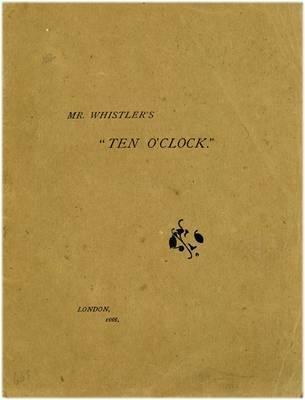
Mr. Whistler's Ten O'Clock
1885
First Published
3.35
Average Rating
38
Number of Pages
• A facsimile of Whistler's published 1885 lecture, the culmination of years of work and self-promotion after Ruskin's bruising criticism, expressing his artistic beliefs with satire and beauty Whistler was one of the most original, if also tirelessly self-promoting artists of the later 19th century. After his disastrous run-in with John Ruskin, the greatest critic of the previous generation, Whistler poured his thoughts and feelings about art into this lecture, which made him if anything more notorious, but was also widely admired for its insights and wit. It is reproduced here exactly as he had it printed, with an essay by the leading scholar Margaret MacDonald putting it into the context of Whistler's career and times.
Avg Rating
3.35
Number of Ratings
20
5 STARS
15%
4 STARS
25%
3 STARS
45%
2 STARS
10%
1 STARS
5%
goodreads
Author
James McNeill Whistler
Author · 3 books
James Abbott McNeill Whistler (10 July 1834 – 17 July 1903) was an American artist, active during the American Gilded Age and based primarily in the United Kingdom. He was averse to sentimentality and moral allusion in painting, and was a leading proponent of the credo "art for art's sake". His famous signature for his paintings was in the shape of a stylized butterfly possessing a long stinger for a tail. The symbol was apt, for it combined both aspects of his personality—his art was characterized by a subtle delicacy, while his public persona was combative. Finding a parallel between painting and music, Whistler entitled many of his paintings "arrangements", "harmonies", and "nocturnes", emphasizing the primacy of tonal harmony. His most famous painting is Arrangement in Grey and Black No. 1 (1871), commonly known as Whistler's Mother, the revered and oft-parodied portrait of motherhood. Whistler influenced the art world and the broader culture of his time with his artistic theories and his friendships with leading artists and writers.